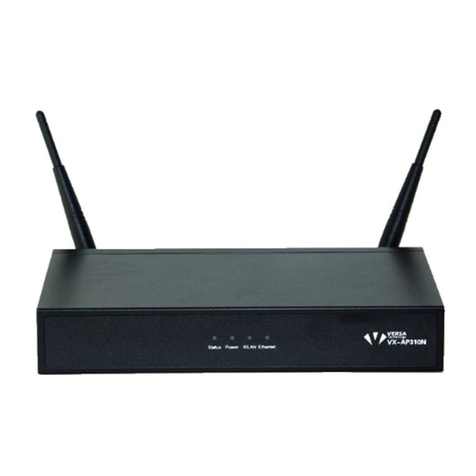i
TABLE OF CONTENTS
CHAPTER 1 INTRODUCTION .............................................................................................1
Features of your Wireless Access Point...........................................................................1
Package Contents ..............................................................................................................4
Physical Details..................................................................................................................4
CHAPTER 2 INSTALLATION...............................................................................................6
Requirements.....................................................................................................................6
Procedure...........................................................................................................................6
CHAPTER 3 ACCESS POINT SETUP..................................................................................9
Overview ............................................................................................................................9
Setup using the Windows Utility......................................................................................9
Setup using a Web Browser............................................................................................12
CHAPTER 4............................................................................................................................14
OPERATION AND STATUS ................................................................................................14
Operation.........................................................................................................................14
Status Screen....................................................................................................................14
System Screen..................................................................................................................22
Access Control.................................................................................................................25
Wireless Screens..............................................................................................................28
Basic Settings Screen.......................................................................................................28
Advanced Settings...........................................................................................................31
QOS Management...........................................................................................................33
Security Profiles...............................................................................................................33
Security Profile Screen....................................................................................................35
CHAPTER 5 PC AND SERVER CONFIGURATION .......................................................55
Overview ..........................................................................................................................55
Using WEP.......................................................................................................................55
Using WPA-PSK..............................................................................................................56
Using WPA with Radius.................................................................................................57
802.1x Server Setup (Windows 2000 Server)................................................................58
802.1x Client Setup on Windows XP.............................................................................68
Using 802.1x Mode..........................................................................................................74
CHAPTER 6............................................................................................................................75
ACCESS POINT MANAGEMENT......................................................................................75
Overview ..........................................................................................................................75
Admin Login Screen........................................................................................................75
Auto Config/Update ........................................................................................................77
Config File........................................................................................................................79
Log Settings (Syslog).......................................................................................................81
Rogue APs........................................................................................................................82
SNMP ...............................................................................................................................83
Upgrade Firmware..........................................................................................................85
Operation Mode...............................................................................................................86
APPENDIX A SPECIFICATIONS .......................................................................................90
Wireless Access Point......................................................................................................90
APPENDIX B TROUBLE SHOOTING ...............................................................................94
Overview ..........................................................................................................................94
General Problems............................................................................................................94
APPENDIX C WINDOWS TCP/IP.......................................................................................96
Overview ..........................................................................................................................96





























